#early 20th-century pulp fiction
Explore tagged Tumblr posts
Text
Uncover the Horrors of the Bahnsen Knights on Nintendo Switch - A Tale of Cults and Cryptic Collective
Bahnsen Knights, the third installment in the Pixel Pulps anthology, takes a chilling dive into the horror of man. Available on PC and Mac via Steam & GOG, the apocalypse awaits on Nintendo Switch, PlayStation 5|4, Xbox Series X|S, and Xbox One on Thursday, Jan. 18, 2024. The religious cult, Bahnsen Knights, led by a former car salesman named Toni, unleashes biblical storms on highways,…
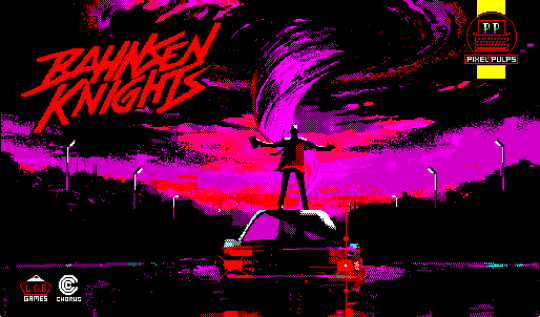
View On WordPress
#‘80s computer graphics#Bahnsen Knights#Chorus Worldwide#cult narrative#digital storefronts.#early 20th-century pulp fiction#interactive fiction#launch discount#Nintendo Switch Online#Nintendo Switch release#Pixel Pulps anthology#psychological horror#Shintaro Kanaoya
0 notes
Text

Race car driver Barney Oldfield, the son of a US Civil War veteran, was a name synonymous with speed driving to the people of the early 20th Century. Characters in pulp fiction would frequently say things like "what, you think you're Barney Oldfield?"
As a pop culture figure, Barney Oldfield frequently did advertisements, like this 1908 one for Pepsi-Cola:

And this one:

126 notes
·
View notes
Text
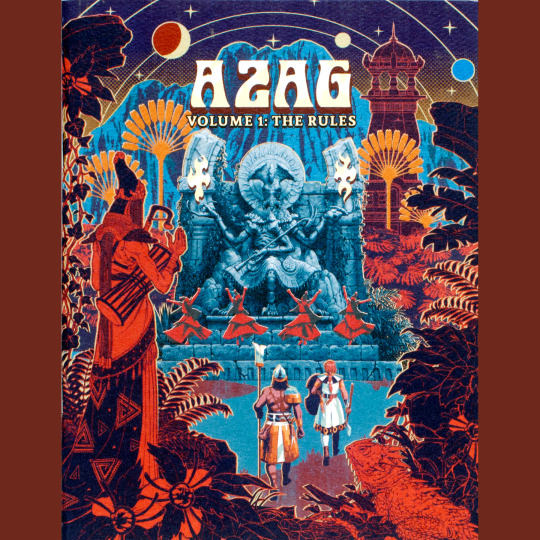
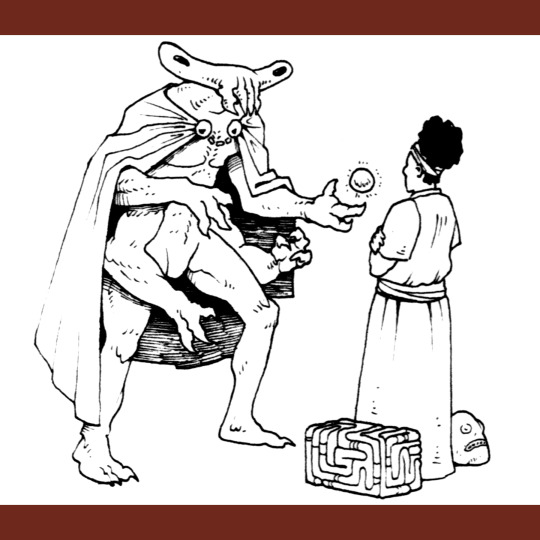
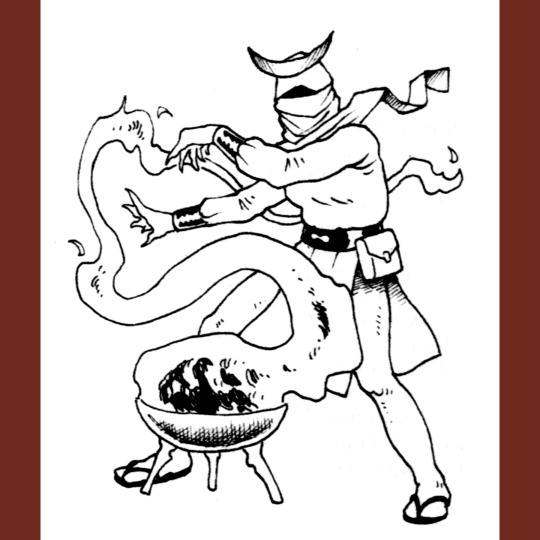
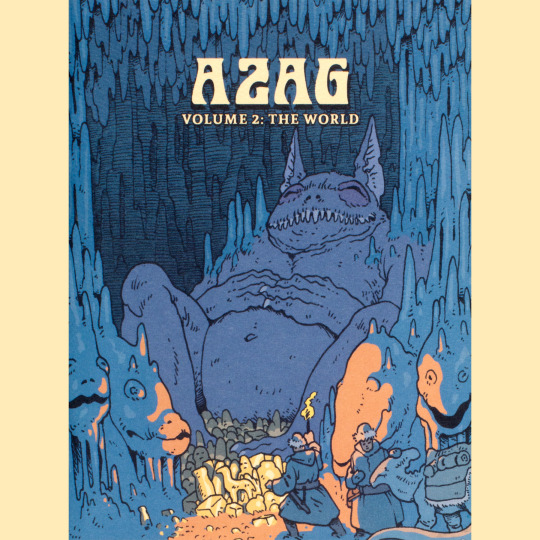


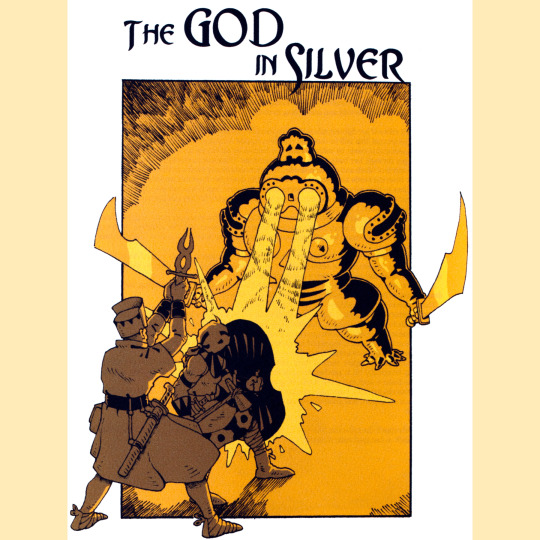

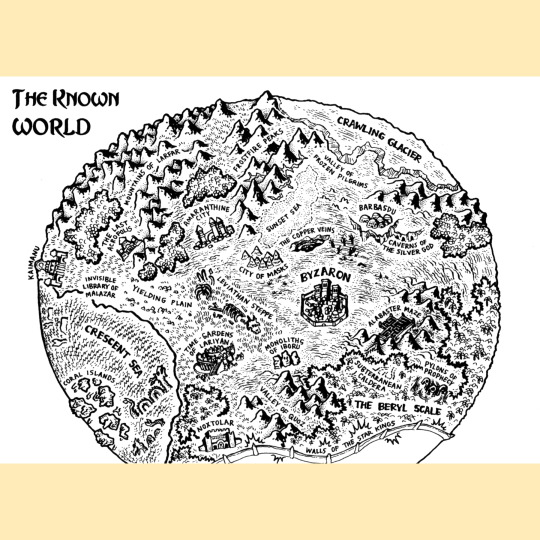
Azag (2021) is a neat 2-volume rule set and game setting. This is the limited edition from LFOSR. It descends, primarily, from Dungeoneer/Advanced Fighting Fantasy, which makes it a cousin of sorts to Troika. I am tempted to call it the less weird cousin, but that isn’t entirely true — it is just a different sort of weird.
Three attributes. Basic rolling is 2d6, rolling high in opposed contests, rolling low when testing your attributes. Unlike Troika, other dice can be swapped in to simulate greater ease or difficulty — climbing during a blizzard, say, might warrant 2d8 or 2d10 for a Stamina test, depending on the severity of the storm. Combat is more formally structured than Troika, but still pretty fast and loose compared to other games. There are mechanics for social encounters, too, with an ante system that spends Luck, which I really like — it is nice to have a mechanical underpinning for social stuff if you need it. Spellcasting is point-based and the player rolls for success, putting it essentially in line with the skill system. Failure invites calamity. And spellcasters can duel; in this case, casting is an opposed test, and the loser suffers calamity (rather than the cast spell effect — you’re basically dealing with raw arcane energy in a duel). Its a fun, flexible little system!
The world is nice too, cobbled thematically out of early-20th century pulp traditions, particularly Clark Ashton Smith’s stories and Lovecraft’s Dreamlands, both of which feel less explored than say, Conan. It feels a little more restrained and fuzzier at the edges than something like Hyperboria or even DCC. I loooove Logan Stahl’s art, particularly the cover of Volume 2, featuring a snoozing Tsathoggua. In game terms, the world is defined by micro fiction and random tables for encounter seeds and such. These make for an interesting approach that is atmospheric without being overly locked into specific details.
302 notes
·
View notes
Text
originally written for zetans/bts
Zetans were designed by Adam Adamowicz for Fallout 3, inspired by the UFO lore from previous Fallout media. Like protectrons, the design of Zetans strongly evokes "Martian"-adjacent pulp science fiction films of the 20th century.
This is likely why their suits in Fallout 3 resemble tinfoil. The sci-fi trend of greys in shiny suits may have been inspired by a story related to the legend of Roswell, wherein the government allegedly confiscated a sheet-like alien metal from a farmer. In supposed photographs of the material, it resembles tinfoil.

The Fallout 4 revision of the Zetan design gives them a bulky harness with a large, rigid metal base for their helmets, and an apparent respiratory apparatus on the neck. The design closely resembles the uniforms worn by martian soldiers in the 1996 film Mars Attacks!, which is itself a retro pastiche of pulpy alien B-movies.
The name Zetans is based on Zeta Reticulans, a designation commonly used by sincere extraterrestrial theorists for "short greys," the stereotypical stock aliens typically invoked in pop culture depictions. Most people who report being abducted by aliens identify or describe their tormentors as short greys.
The modern conception of flying saucers primarily emerged in America in the wake of World War II. Early sightings were strongly correlated with sites of nuclear experimentation or nuclear power. These reports were celebrated among science fiction enthusiasts, who began forming "flying saucer clubs" as early as the 1930s.
The topic of aliens saw an explosion of popular interest after the 1947 Roswell Incident, when nationwide media published sensational reports of a flying saucer having supposedly crashed in New Mexico. The legend of the "Men in Black" may stem from unconfirmed reports of government agents intimidating civilians in the wake of the Roswell Incident.
The conception of Men in Black as disguised aliens was codified and popularized by the 1975 book The Mothman Prophecies. In Fallout 76, the Emissary is a character who fits the description of a Man in Black. The Emissary holds a key to one of the domes at Black Mountain Ordnance Works, which is based on the "TNT Area" north of Point Pleasant where the Mothman was first seen. There were many reported sightings of Mothman and UFOs at that site throughout 1967. Conspiratorial Mothman-UFO folklore often asserts the dome-vaults of the TNT Area to contain government secrets, which is thoroughly reflected in the game.
The popularization of the short grey abduction scenario is often attributed to the story of Betty and Barney Hill, who reported being abducted in 1961, and provided vivid, evocative testimonies under hypnotic regression. They also drew star maps which were likened to Zeta Reticuli, hence the name Zeta Reticulans. Skeptics criticize hypnotic regression as a technique and hold that the supposed star maps do not meaningfully depict Zeta Reticuli.
Theorists (conspiratorial, Fortean, and skeptical alike) often connect the modern alien abduction scenario to historic reports of supernatural encounters, especially European fairies, and other similarly-psychedelic "trickster" beings throughout the history of folklore.
i should continue this some time. there's a lot more to say.
65 notes
·
View notes
Text
The basic structure of an American psyop is cobbled together out of advertising techniques, pop psychology, and pulp fiction tropes... the military spent the early years of the 20th century figuring out how to craft messages that can hurt, demoralize, and distract you.
How to recognize a psyop in three easy steps
50 notes
·
View notes
Text
A primary difference between my evaluation of Lovecraft's fiction and the majority of his other critics and fans is that I have believed for more than 40 years that he was creating a RELIGION within his stories. This fictional religion began quite subconsciously at first, but by 1930 it had begun to be an intentional creation. Lovecraft had studied all the world's major historic religious beliefs. By the age of 8, however, he was a confirmed atheist/agnostic. Despite his lack of faith in any higher, controlling intelligence in the universe, HPL remained fascinated with all historic myths, fables, conspiracy theories (of the supernatural kind) and psuedo-scientific theories of creation or alternative realities. One might ask why an individual on the one hand so steeped in the principals of scientific method, strict rationalism, and reasoned evaluation would write for a lifetime about supernatural phenomena. If we study the Lovecraft revealed in his letters we find that almost EVERYTHING he wrote about in fiction was diametrically opposed to his personal beliefs and values. In THE CALL OF CTHULHU he tells of a gigantic and hideous monster - diety who is trapped in a city of bizzare and logically impossible architecture. Cubism and Futurism, two schools of Modern Art that had emerged during the early years of the 20th century are referenced too. Contrast these things to Lovecraft's stated personal values: As a child he had actually made altars to the gods of Rome. He was a lifelong aficionado of Classical Architecture. He despised Modern Art and modern literature. He was a firm believer in scientific method, but believed that science would never reveal any MEANING in the universe/ cosmos. Though Lovecraft evolved considerably as an individual over the course of his lifetime he remained outwardly a very conservative individual. I believe that one day it may be revealed that Lovecraft's fictional religion was something he worked on and developed in secret, perhaps hoping or expecting that its complexity and ultimately esoteric nature would never be fully revealed to others. Probably he recognized that any such fictional religious creation would be trivialized by others if It was discovered. Unfortunately that fear would be realized after Lovecraft's death. It is now known as THE CTHULHU MYTHOS. It should be remembered that in Lovecraft's day there were no "collections" of his stories available. If anyone wished to compare the background information in his fiction they would have to own a considerable collection of pulp magazines, privately printed fanzines and unpublished works in the hands of his individual friends. In many cases Lovecraft's most loyal followers were also fiction writers themselves and busy with projects of their own. Today we have a vast trove of Lovecraftian material that was unavailable to his early critics. Every few years another important source becomes available. HIPPOCAMPUS PRESS will release the complete correspondence between Frank Belknap Long and H. P. Lovecraft shortly. As Long was one of Lovecraft's closest friends and a fiction writer too we can expect that this fothcoming publication will give us even greater insite into the remarkable mind of the modern world's greatest master of supernatural fiction. (Exhibit 536)
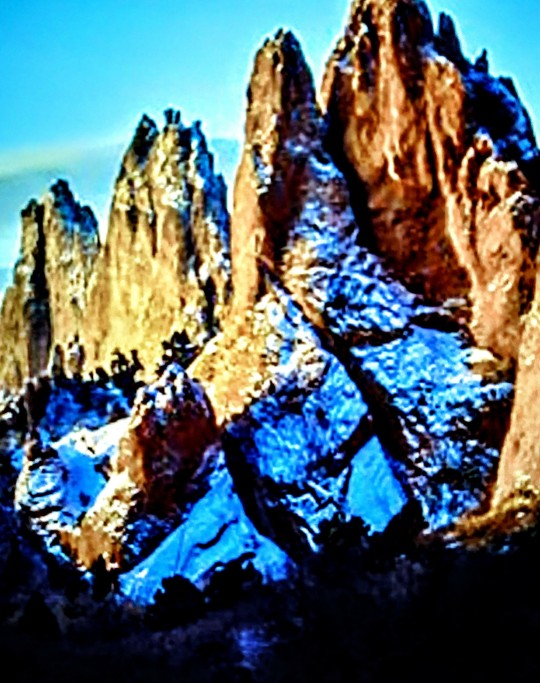
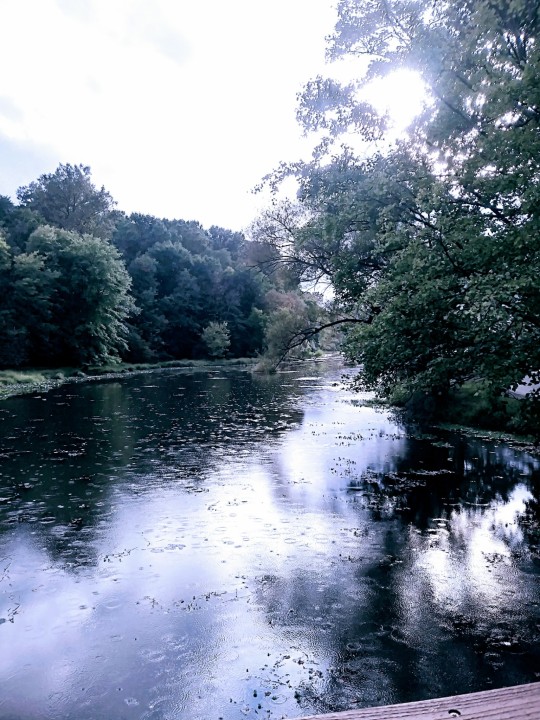


11 notes
·
View notes
Text
The thing that bugs me about Cazador
Allow me to ramble about a thing that really bugs me about Cazador and his character design.
Let me start out with the fact, that it is super iffy that Cazador is the one recognizable east asian character in the entire game. At least from what I came across. And, you know. It is iffy if you take a minority and make their only representation the "sadistic vampire who wants to sacrifice 7000 mostly white people to become a god". I hope I don't have to explain that.
And yes, technically speaking... yeah, Karlach is technically also East Asian. With just one problem: Her being red-skinned and having the make-up very much hides this fact. Like, I did not realize this until I saw the mod that removed the make-up from the companions.
But outside of the basic issue with the trope... Well, look. I do not think that the folks Larian were like: "Hehe, we will use this character to show how evil the Asians are!" or something like this. But the game very much shows that there was a lot of internalized biases. And be it just in the fact, that we barely come across non-white characters in the entire fucking game. All non-white characters are basically tokens.
And before someone comes in with: "Faerûn is based on medieval Europe!" First off: "Shut up." Second: Going by official DnD Lore Faerûn is a super diverse place, where you will find all sorts of Asian, Arab, and Black people. I mean, just look at the DnD movie, where they made an effort to have half of the cast be non-white. Like, the Faerûn that Larian depicts is basically the Faerûn of 3e, not 5e.
And then... Well, when it comes to Cazador, then there is the Early Access design.

Now, this is actually where WotC stepped in and was like: "Yeah, you cannot do this." Officially by explaining that elves do not have facial hair. But I do imagine that someone at WotC actually looked at this design and was like: "... Do they realize that this is Fu Manchu?"
Because yeah, this design is simply just Fu Manchu. And for those who are not aware: Fu Manchu is a character popular in pulp fiction of the early 20th century, that arose mostly from Yellow Peril stereotypes.
He was a Chinese magician, who was up to all sorts of evil schemes, which suspiciously often involved sacrificing white people (mostly white women) to evil gods or demons. He made appearances in all sorts of media back then, including movies (where he obviously was portrayed by white actors in yellowface) and some off-brand Sherlock Holmes novels that were not written by Doyle but other writers.
Fu Manchu was also what the original Mandarin in the Marvel Comics was based on.
This is one of the Renditions of Fu Manchu in one of those off-brand Sherlock Holmes stories.

And here is the earlier Mandarin design:
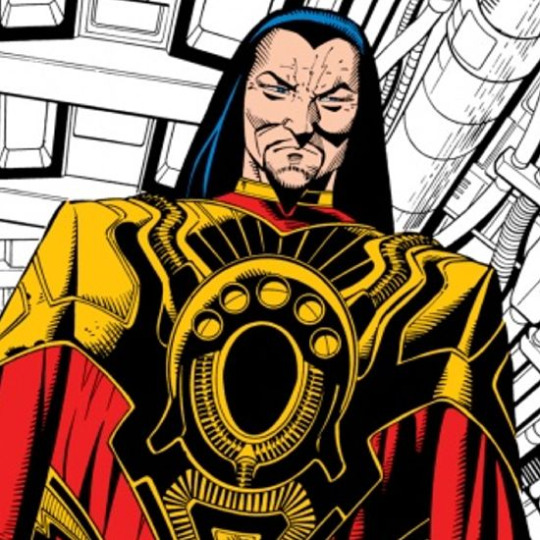
And, like, I am sorry. But that stuff leaves a bitter taste in my mouth.
Again, I do not really think that this stuff was done on purpose. My best guess is, that Cazador was either based on the Mandarin, or on some of the other "Chinese Magician" villains that some American Kung Fu movies put into their media in the 70s and 80s.
But I also think there was nobody at Larian who did any sort of sensitivity consulting when it came to the inclusion of non-white characters.
#baldur's gate 3#baldurs gate 3#bg3#astarion#bg3 cazador#cazador szarr#fu manchu#yellow peril#anti asian hate#racism#larian studios#this is why you need sensitivity advisors
51 notes
·
View notes
Text


If you missed out on grabbing The Shabti last time it was on sale, you're in luck! The eBook is $0.99 on Amazon, Apple Books, and Kobo (and possibly other places I don't know about). Treat yourself or snag it as a gift for your favorite fan of Egyptology, early 20th-century Spiritualism, 1930s pulp fiction, supernatural mystery, and/or M/M romance.
#the shabti#ghost stories#historical fantasy#queer fiction#2024 debuts#lgbtqia books#ancient egypt#supernatural thriller#m/m romance
7 notes
·
View notes
Text


JOMP Book Photo Challenge / November / 11 / judged by its cover
I can think of no better book series to highlight than The Amelia Peabody Mysteries by Elizabeth Peters for today's prompt.
These covers just scream adventure, ancient Egyptian intrigue and fun, and I've first stumbled upon this series in my third semester as a literature student in a seminar where we were discussing the portrayal of Egypt in British and American culture and literature.
Set in the Victorian age, The Amelia Peabody Mysteries are neo-victorian books that revolve around the Victorian adventurer and archaeologist Amelia Peabody. She is the definition of a strong, independent woman in a time when that wasn’t exactly the norm.
A lot of the covers feature pyramids, desert landscapes, deadly creatures and ancient tombs — basically all the classic symbols of Egyptology. And that’s exactly what you’re getting in these books. The Amelia Peabody series is set in the late 19th and early 20th centuries, a time when archaeology was booming, and Egypt was the ultimate destination for daring explorers.
Some of the older editions, especially the mass-market paperbacks, have that classic pulp-fiction look with dramatic, almost overly stylized art. They’re fun, they’re dramatic, and they’re a little over the top — but honestly? That’s exactly the tone of these books. They’re adventurous, slightly campy, and totally unafraid to lean into that “larger-than-life” energy.
What I always enjoyed about these books is that it’s not all serious Egyptology and murder mysteries - there’s a delightful undercurrent of humor that makes reading these books a joy.
Furthermore, the tension that builds between Amelia and her love interest Radcliffe Emerson is absolutely adorable. It's a slow-burn romance that develops within the first book of the series, with loads of sass sparkling between them, but I loved how Amelia was never changing herself for the sake of love, but stayed true to her adventurous spirit and passion for Egyptology.
Sadly, I have only three books in my collection yet, but I definitely need to thrift the other books of this series as well!
#justonemorepage#jompbpc#book photo challenge#book blog#booklr#amelia peabody#amelia peabody mysteries#elizabeth peters#crime fiction#mystery fiction#suspense#whodunnit#ancient egypt#victorian age#books and reading#bibliophile#books books books#book recommendations#literature#literature blog#literature student
6 notes
·
View notes
Text
20th Century Gay & Lesbian Historical Fiction for Young Adults
While your parents (or adults over twenty-five or so) may object to the mid-to-late 20th century being called "historical," there's been a wellspring of YA fiction recently about the experiences of gay & lesbian teens in the last hundred years. Here's just a few books from this niche that have popped out to me:
World War II & the 1950s

Nothing Sung & Nothing Spoken by Nita Tyndall Find this book near you on WorldCat. Starting in 1938, this book follows Charlie (short for Charlotte), who falls in love with jazz music and other girls in Nazi Germany. Through the war, Charlie's determination to hang onto these illicit, "degenerate" loves under violence and authoritarianism is tested, and relationships change before the war ends...
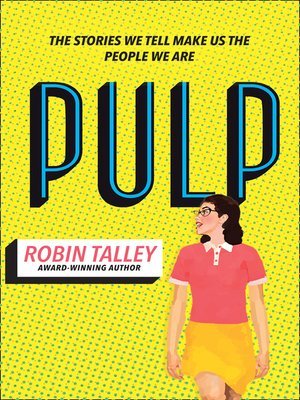
Pulp by Robin Talley Find this book near you on WorldCat. Taking place in both the 1950s and the modern day, main character Abby becomes engrossed in 50s lesbian pulp fiction and becomes determined to find the author of her favorite work who, in her past, deals with similar relationship problems amid the mid-century Lavender Scare.

My Lovely Frankie by Judith Clarke Find this book near you on WorldCat. Set in 1950s Australia, Tom feels compelled to join a Catholic seminary, but soon feels himself falling for a fellow student. Looking back on the situation from the modern day, Tom reflects on what love can really mean within Christian religion.
The 1970s
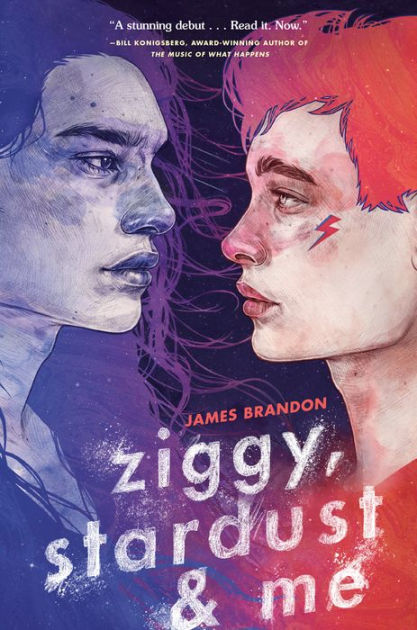
Ziggy, Stardust, & Me by James Brandon Find this book near you on WorldCat. Sixteen-year-old Jonathan is in electroshock conversion therapy just months before “homosexuality” is removed from the DSM. In these volatile times, Jonathan dreams about David Bowie & develops a friendship - maybe more - with a Two-Spirit kid named Web.

One True Way by Shannon Hitchcock Find this book near you on WorldCat. Aspiring reporter Allie moves to a new town in the late 1970s and develops a friendship and romance with Sam, a fellow middle-schooler. But the town they live in isn't very supportive of the few gay people who live there, leading Allie to try and find support in perhaps unexpected places amid a backdrop of rapid social change.

Music From Another World - Robin Talley Find this book near you on WorldCat. Another pick from Robin Talley, this time taking place in the punk scene of 1970s San Francisco. Told largely through letters, two teen girls - both closeted - become pen pals through their schools, and must learn how to rely on each other and their rebellion as the anti-gay backlash in the U.S. grows more and more oppressive.
The 1990s

Like a Love Story by Abdi Nazeman Find this book near you on WorldCat. Coming in at the tail end of the 1980s AIDS crisis, Reza is an Iranian immigrant struggling with his fears about being gay and getting sick, while a love triangle develops between a girl crushing on him, Judy - who he only sees as a friend - and an openly gay punk, Art. The trio volunteer for ACT UP, an AIDS advocacy group, as fear, love, and illness makes relationships complicated for all three.

The Miseducation of Cameron Post by Emily M. Danforth Find this book near you on WorldCat. Living with her aunt in Minnesota after her parents' untimely deaths, Cameron has to navigate her love for girls in a strict Christian household - one that, once she's caught, sends her to a conversion therapy camp. There, she must navigate meeting other queer people for the first time, but also come face to face with trauma...

I Will Greet the Sun Again by Khashayar J. Khabushani Find this book near you on WorldCat. K is a teen navigating abuse, the immigrant experience, and blossoming queerness through the early 90s until after the September 11th attacks in 2001. When K and his brothers are taken unexpectedly to Iran by their volatile father, they don't know it's going to be an experience that changes their lives - though it may or may not be for the better.
#literature#young adult literature#book reviews#librarian stuff#my writing#historical fiction#young adult
6 notes
·
View notes
Note
Hello! I'm the person that made the rant post about my dislike on the lack of natural dichotomy of the Pyramids and Traveler since the introduction of the Veil that turned into a whole thing. You mentioned a lack of pulp in your reblog and it's stuck with me since then. I wasn't familiar with the term and did some research on it, but I still don't think I get what it is. I tried looking it up but a lot of articles and videos I could find explain the history of pulp and its influences in modern day sci-fi but not necessarily what it is, especially in a way that would give me context to better understand your reblog. If it's not too much trouble, can you explain a little more what the "pulp" is that destiny is lacking?
I’d be happy to try and give you a little more insight into what I feel are important tenets of pulp as a genre/concept! I decided this might be a good opportunity to talk a little about it generally because I am really feeling its absence generally in the past couple years, so I included some historical backing which you’re probably already familiar with – hope that’s OK.
I did a little digging personally, for some good places to familiarize oneself with the basics of pulp as a concept and/or genre. It was nice to re-affirm some info that I’ve felt secure in holding as true without a ton of evidentiary support, and I also learned some cool new stuff as well! I think a good place to start would be to link to the TV Tropes page about pulp magazines, which does a pretty good job of explaining the origins and foundational aspects of the concept in a way that is easy to digest. It also has a lot of examples available to peruse. I also found this cool article on the golden age of pulps, which is an interesting read.
This got long, so below the cut!
To reiterate, the original ‘pulp’ terminology and vibe comes from early/mid-20th century magazines, which were cheap and easy ways to access genre fiction and action/adventure stories before comics, paperback novels, and TV/movies were really on the scene. Pulp magazines spanned a very wide array of genres, but because of a lack of appreciation for the medium, a majority of pulp magazines and aspects of what I would consider to be pulp as a genre have been allowed to fall into obscurity. There are places where I feel it is particularly obvious, especially the superhero genre (don’t get me started we’ll be here all week) but also in fantasy and science fiction – a term which was, in fact, coined by Hugo Gernsback, an editor for pulp magazine Amazing Stories.
They were cheap to make, cheap to buy, and easy to serialize; they could be really schlocky, crass, and unpolished. They could also be fucking incredible! The Shadow is a good example of an early pulp property with screaming highs and frankly peat-bog lows. Lovecraft published a lot of what is considered to be his ‘best work’ in Weird Tales! Conan the Barbarian, too! They kind of came out of the gate with a somewhat negative connotation associated with ‘low-brow’ forms of literature like dime novels, but where other magazines of the time tended to incorporate non-fiction articles and photography, pulp mags tended to be fiction stories only – short stories, or longer stories split into serialized chapters. Early on, not many of them had art, though with the advent of comic books that changed (you could argue that books like Creepy and Eerie are direct offspring of early pulp mags). Similar to what Weekly Shonen Jump does with manga.

If you think of a genre as a toolbox, pulp is a box full of tools that function fine alone, but excel at assisting the function of other toolboxes. I would almost liken ‘pulp’ to the concept of ‘camp’, which are also two concepts that can and do overlap with a high degree of synergy. Pulp has its own foundational attributes that are distinct from camp – for example, camp is gay relies a lot more on its self-awareness, at being able to wink at the viewer or participant, and telling you ‘yeah, we know it, but isn’t it fun?’ Pulp, on the other hand, is the (no pun intended) straight man counterpart to this aesthetic sensibility; pulp is at its best when it is being completely earnest. The quippy lines and dramatic proclamations are meant to be taken on their face. Nowadays it’s the kind of stuff that memes are made of – ‘That Wizard Came From The Moon’, ‘I don’t have time to explain why I don’t have time to explain’, ‘Whether we wanted it or not, we’ve stepped into a war with the Cabal on Mars’. Saying shit that has no explanation with your whole chest. Trying to be cool on purpose, the ultimate cringe move.
Nowadays I think that this kind of thing has mostly died out of modern media, but the counter-motion is still prevalent in mainstream superhero movies. A good example is the ‘Would you have preferred ~YeLlOw SpAnDeX~’ line from the OG X-Men movie. Hey dickhead! The yellow spandex is cool if you, the guy making the movie, believes its cool! Crucially, while a lot of modern superhero stuff is quippy and irreverent, it often uses these tropes in a self-aware or cynical manner – afraid of being earnest, committing the aforementioned cardinal sin of trying to look cool on purpose.
(God damn it, I’m talking about superheroes again. Sorry. Before I get back on task this is why I loved the recent Moon Knight run so much; Jed MacKay is NOT afraid to have the characters say some absolutely batshit thing but it comes off as so, so cool. And yes, a little cheesy.)

And then, where modern sci-fi typically has an ultra-detailed explanation on-hand, I think a lot of early pulp stuff just… didn’t. Ask a sci-fi property for an explanation on, oh I don’t know, ‘where did these super-humanoid sapient machine warriors come from’ and it will likely have a molecule-deep explanation of how those unnamed machine people were created. Ask a fantasy property for an explanation on the same and it might say, ‘no’. It’s not that a pulp-leaning property won’t give you the answer to that question… it just might not have it. The ‘why is it/how is it’ is not as important as the ‘what is it’ and ‘how is it relevant’; a writer had a limited amount of page real estate, as multiple features were typically crammed into a single magazine. Even if a feature was serialized, much like television episodes (before the binge trend), one had to keep information digestible, and not too reliant on a prior or later edition that a reader might never see.
Explanations tended to be in service of an emotional beat, or to a theme, versus as a grounding agent to immerse a reader in the world. For the record I don’t necessarily think of either method as being better or worse, and heavy worldbuilding can still utilize pulp as a veneer or filter to engage audience expectations in different ways. Pulp stuff relies a lot on suspension of disbelief without utilizing a rigid lore-based framework to – though, you know, your story/setting still has to have its own internal logical consistency.
(I feel that it is important to note, as a partial consequence of the time period in which these magazines were being made, and when pulp fiction was most heavily consumed, xenophobia and racism are also heavily present in pulp works. I think everybody knows at this point about how much Lovecraft sucked but it’s a valuable example of how a lot of ‘fear of the unknown’ in that time was transliterated into ‘fear of the different’, in general but especially relating to genre fiction. If you decide to explore material in this genre, in this time period, be forewarned! Some of it was pretty glaring!)
So, let me tie some of this stuff to my previous statements about Destiny. I think that Destiny is an excellent example of how pulp tropes, aesthetic, and genre conventions can be used to enhance and streamline a setting… and how stripping too much pulp away can have a detrimental impact on the depth of a narrative.
The original narrative and worldbuilding of Destiny drew very heavily on pulp aesthetics to create a foundation, both in its appearance and its lore. The ‘Golden Age of Science Fiction’ was a period of time in the mid-20th century that sort of transitioned sci-fi out of pulp magazines and into its own thing, but the foundational structure of science fiction at this time was still heavily pulp-influenced. I think this is very well-represented by the portrayal of Venus as a ‘garden’ (jungle) world, very lush and with sulfurous and sometimes acidic rains. Before advancements in astronomical technology went and fucked everything up for us writers, Venus’s opaque cloud-covered atmosphere was impenetrable enough that there could be anything under there – and a popular portrayal of Venus was a muggy, humid, rain-heavy world that sometimes also included lush jungles. In Bradbury’s short story The Long Rain (WHICH ran in Planet Stories, a pulp mag, by the way!) this portrayal is a central obstacle to the narrative; it’s also used in Heinlein’s novel Space Cadet.
The color scheme that Destiny uses for Venus also matches a common color scheme for Venus in this era – see this cover for Fantastic Adventures. Visually, I think that this comparison between the postcard that went out with the D1 limited/collector’s edition and this Planet Stories cover for The Golden Amazons of Venus demonstrates the influence, at least regarding terrain and biome.


In fact, I think that you can see from this Eververse postcard – which could have been peeled off of any era-appropriate paperback novel – that the influence goes bone-deep. Destiny even refers to humanity’s halcyon age as ‘The Golden Age’.
(Below: Is this image from Destiny dev, or a science fiction paperback from the 60s? Who knows! I know. It’s Destiny.)

In the modern era of Destiny storytelling, though the visual elements of the universe remain largely rigid relative to this early framework, the pulp underpinning of the narrative has been largely left behind. The original game’s story, and the stories of subsequent DLCs, felt very pulp-inspired – this ranged from ‘sort of effective’, like in House of Wolves, to ‘game-savingly effective’, like in The Taken King. Pulp lends itself to straightforward conceptual executions, and brisk narratives, because of its roots as short-form literature. The narrative of D1 was simple and to the point; Light good, Dark bad, humanity is in the shit, think you can kill a god? The surrounding world scaffold was rich but not deep. As I like to say, sometimes a river can be wide but shallow. This is not a commentary on its quality – something can be good but not complex, and IMO, sophistication is not necessarily synonymous with complexity. Destiny managed to pull off a trick that many high-quality pulp stories employ: it made the river look deeper than it was. This is the whole reason that Lovecraft’s oeuvre has the staying power it has: other writers got to play in the space because it felt very deep, even though the stories themselves were fairly straightforward.
I also don’t mean to say or accidentally imply that ‘morally grey storytelling cannot exist within pulp stories’, because that would probably get me torn apart; that’s just not the kind of straightforward foundation that the original Destiny was built on. ‘It is what you see, but what you see could be anything’, you know? The problem that began to muddy the waters in the Destiny narrative is that they started to say, ‘You know, actually, it ISN’T what you see’.
Tentpole narrative additions to the Destiny 2 game employ varying levels of pulp. As I said in the other post, the Hive have a potent pulp influence built into their foundational coding, and so subsequent portrayals of the Hive as a main antagonist have higher degrees of pulp genre naturally present in the narrative – it’s hard to separate the two of them. Shadowkeep and The Dark Below draw strongly on the ‘sword and sorcery’ convention, a subgenre of fantasy that is a heavy (perhaps 1:1) blend of fantasy and pulp; think Conan, or Elric of Melniboné (who, hey! Showed up in a novella feature, in an issue of Science Fantasy magazine, named… THE DREAMING CITY). The Witch Queen leaned away from pure sword and sorcery and more towards noir/detective pulp – though, I think, TWQ is a good example of the pulp slippage in its narrative, resulting in some more bland moments and things that feel ham-fisted in a bad way. Part of it, I think, is the need to make these expansions ‘long’ and complicated without making the player feel like they’re slogging; in a more pulp-forward TWQ narrative, the reveal that Savathûn is actually NOT evil-aligned and is a potential ally would come much earlier in the story, and the central mystery would be MORE about ‘what the fuck is she trying to do/prevent’, leading to the Witness reveal as the centerpiece of the finale and the ‘solution’ to the central mystery.
The decision to start retroactively appending more complex connections between disparate pieces of content naturally leads to a reduction of pulp prominence, in my opinion. If you imagine Destiny as a vessel that is mainly full of three component liquids – Fantasy, Sci-Fi, and Pulp – you can say that adding more of one genre pushes out another to make room. You can always pour more of one genre in to re-balance, but in response to increasing levels of sci-fi the narrative seems reticent to reintroduce pulp back into the mix, instead favoring fantasy. But another problem is that once you take it out, Pulp is really hard to put back; once you solidify and unionize world-lore, every subsequent retcon risks diluting and destabilizing that world-lore until a) nobody cares about it anymore and b) it stops being mutable at all, and becomes sludge.
The lore behind the existence of the Exo was originally very pulp, with no real explanations given for exactly what they were and where they came from, and how they attained sapience. Early hints that Cayde and a few other Exo having once been human didn’t preclude other Exo from having other origins – for example, implications that Exo war-frames eventually achieved sapience as a result of the ‘Deep Stone Crypt’, and that they were originally simple AI-equipped warriors designed and overseen by Rasputin to minimize human casualties. This early mystique around the origins of the Exo is classically pulp: we don’t need to know how the hyper-advanced robots were made, we just need to know what they are, why they are relevant to the story. It allows You, The Player, to engage with it at whatever level you want. In a game where You, The Player, are also being asked to step into the role of You, The Protagonist, this is beneficial to engagement for people (like me!) who like to think too much about the backstory of the your-name-here protagonist on-screen. It is also beneficial to not distracting the player with conflicting information, or accidentally contradicting previously-established lore.
Enter Big-Head Bray. The Beyond Light-era explanation of why Exo were created and how they were made is a retroactive nuclear strike on the Exo lore; it strips away a lot of flexibility and thematic richness from the concept of the Exo, shoehorns them into a single narrow use case, and directly conflicts with early-game Exo lore implying their connections to Rasputin (which they then had to go back and hastily shoehorn back in later) or existence as war machines for the Collapse. If D1 lore is wide but shallow, the D2 lore is narrow but deep. Just because something has a lot of ‘depth’, I.E. many layers to traverse before you reach foundational bedrock, it doesn’t make it good.
Same thing with the Fallen. Season of Plunder felt to me like an attempt to reintroduce pulp genre back into the setting, but it fell flat because of two reasons: it didn’t really want to be pulp, and it was more concerned with its tethers to the science-fantasy exterior world than it was with creating its own cohesive narrative. Why was Mithrax doing evil pirate shit when he was young? Because he comes from a race of fucking evil space pirates! It Does Not Need To Be More Complex Than That! But the exculpation of pulp from the D2 narrative means that if Mithrax doesn’t have a good enough reason, WRT the larger narrative, it would be a glaringly obvious plot hole. By Plunder, Destiny had already undertaken the task of filling out the Eliksni lore with sympathetic science-fantasy excuses for why they were trying to exterminate humankind – the more earnest, pulp-forward explanation would just be that desperate, hurt, suffering people will do desperate things, hurt people, and may perpetuate the cycle of suffering.
Oy. There’s a lot you COULD get into. How the Destiny macro-narrative seems to be decaying the rigidity of good and evil in its original lore vs. how the micro-narrative is obsessed with trying to recapture that good/evil dichotomy in order to give players a reason to like the main characters. How the determination to connect and explain everything has resulted in a general flattening of the background lore, and the subsequent trivialization of many things the game included in earlier iterations of the narrative/lore. How the narrative has basically nothing to do with the Vex because they wrote themselves into a corner by trying to explain them too much while simultaneously not altering the foundational lore of the race, meaning there were too many things they can no longer do without retconning again.
Overall, I guess I will just end by saying that many of the things that Destiny is CURRENTLY doing, feels like the game is straining to rip the part of it out which proudly asks its audience not to think too hard about sweeping, dramatic statements that built a lot of the things people love about the game’s setting and narrative… and in doing so, is just ripping itself to pieces.
#More lore! MORE LORE!#dinklebot sitcom#northbot sitcom#destiny 2#Pulp genre#Genre discussion#Sorry this got so long! I’m not used to writing this kind of big essay#it may not be super coherent but whaddya gonna do
31 notes
·
View notes
Text
Another Wikipedia featured article poll, but it's hand-curated this time. Links and summaries below the cut.
A History of British Fishes is a natural history book by William Yarrell, serialised in nineteen parts from 1835, and then published bound in two volumes in 1836. It is a handbook or field guide systematically describing every type of fish found in the British Isles, with an article for each species.
The Battle of Lake Trasimene was fought when a Carthaginian force under Hannibal ambushed a Roman army commanded by Gaius Flaminius on 21 June 217 BC, during the Second Punic War. The battle took place on the north shore of Lake Trasimene, to the south of Cortona, and resulted in a heavy defeat for the Romans.
Steller's sea cow (Hydrodamalis gigas) is an extinct sirenian described by Georg Wilhelm Steller in 1741. At that time, it was found only around the Commander Islands in the Bering Sea between Alaska and Russia; its range extended across the North Pacific during the Pleistocene epoch, and likely contracted to such an extreme degree due to the glacial cycle.
The Baker Street robbery was the burglary of safety deposit boxes at the Baker Street branch of Lloyds Bank in London, on the night of 11 September 1971. A gang tunnelled 40 feet (12 m) from a rented shop two doors away to come up through the floor of the vault.
On the morning of 6 December 1917, the French cargo ship SS Mont-Blanc collided with the Norwegian vessel SS Imo in the waters of Halifax, Nova Scotia, Canada. The Mont-Blanc, laden with high explosives, caught fire and exploded, devastating the Richmond district of Halifax.
The nature fakers controversy was an early 20th-century American literary debate highlighting the conflict between science and sentiment in popular nature writing. The debate involved important American literary, environmental and political figures.
The Spaghetti House siege took place between 28 September and 3 October 1975. An attempted robbery of the Spaghetti House restaurant in Knightsbridge, London, went wrong and the police were quickly on the scene.
Weird Tales is an American fantasy and horror fiction pulp magazine founded by J. C. Henneberger and J. M. Lansinger in late 1922. The first issue, dated March 1923, appeared on newsstands February 18.
In July 2017, the municipalities of Mahwah, Upper Saddle River, and Montvale in Bergen County, New Jersey, in the United States, opposed extension of an eruv within their borders. An eruv is a land area surrounded by a boundary of religious significance, often marked by small plastic pipes (called lechis) attached to utility poles.
The Makassar kingdom of Gowa emerged around 1300 CE as one of many agrarian chiefdoms in the Indonesian peninsula of South Sulawesi. From the sixteenth century onward, Gowa and its coastal ally Talloq became the first powers to dominate most of the peninsula, following wide-ranging administrative and military reforms, including the creation of the first bureaucracy in South Sulawesi.
65 notes
·
View notes
Text

Pulp and adventure comics chart
A list of comic books inspired by the tradition of pulp fiction and classic high adventure. From daring vigilantes to globetrotting treasure hunters, it celebrates the retro charm of action-packed narratives of the early 20th century.
The full web version of the list includes 60 titles with Wikipedia and Goodreads links.
#comic recommendations#comic recs#pulp fiction#pulp comics#mike mignola#tom strong#the rocketeer#lobster johnson#black beetle#hellboy
2 notes
·
View notes
Text
Queer fiction, day 6/30
Meet Will Darling and his emotional support knife.

This is book one of a three-book series called the Will Darling Adventures. Also, it's by KJ Charles, which means it's a reference to some type of literature you may or may not have read (in this case, pulp adventure novels from the early 20th century). Don't let that deter you.
The books follow Will Darling, a WWI vet, and his growing relationship with Kim Secretan, a spy. There's a lot of plot, a few Shakespeare references, some excellent supporting characters, and the 1920s, a time of great social change and upheaval.
The books are fun and filled with political intrigue, but also very frothy in the scenery-chewing department. They move quick and I found them hard to put down. There are background lesbians, too, in one of the sweeter relationships that I kind of wish had gotten its own story.
As a whole, the three books have quite a lot of sex scenes, which Charles handles well. She's an excellent writer and I've learned a lot from her (and her blog, which is often cited as a must-read for beginning romance writers). Anyway, 10/10, spy stuff is cool AF, go read it.
#pride#lgbtq#book reviews#thirty days of books#gay romance novels#doin spy shit#kj charles#will darling adventures
20 notes
·
View notes
Text
The Femme Fatale Aesthetic & Lifestyle

The Femme Fatale style, known for its seductive allure and dangerous charm, has captivated audiences for decades. Originating in the early 20th century, this enigmatic archetype emerged as a powerful symbol of female empowerment and rebellion against societal norms.
Drawing inspiration from film noir and pulp fiction novels, the Femme Fatale embodied a complex blend of sensuality and cunning intelligence. With her alluring beauty, she navigated a world dominated by men, using her charm as a weapon to manipulate and control those around her.
The origins of the Femme Fatale can be traced back to ancient mythology, where femme fatales such as Cleopatra and Delilah wielded their attractiveness to entice and deceive powerful men. These mythical figures laid the foundation for the archetype's evolution throughout history.
In the early 20th century, the rise of silent films provided a platform for actresses to embody these captivating characters. Icons like Theda Bara and Greta Garbo showcased their magnetic presence on screen, captivating audiences with their smoky eyes, crimson lips, and mysterious personas.


The Femme Fatale fashion emphasizes form-fitting garments that accentuate the female silhouette. Dresses in rich fabrics like satin or velvet, with plunging necklines or high slits, reveal just enough skin to tantalize. The color palette includes deep hues like black and burgundy, evoking mystery and sensuality. Accessories such as bold jewelry pieces and sheer stockings paired with heels enhance the look. Makeup focuses on captivating eyes with smoky eyeshadow and dark red lipstick for sensuality.


As time progressed, the Femme Fatale style evolved alongside cultural shifts in society. It became a symbol of women reclaiming their power and challenging traditional gender roles. From Marlene Dietrich's provocative performances to modern interpretations by artists like Lana Del Rey, the allure of the Femme Fatale continues to captivate our imagination.
Today, the Femme Fatale remains an enduring figure in popular culture—a reminder that strength and vulnerability can coexist within one captivating persona. Whether seen as a cautionary tale or an embodiment of feminine power, the legacy of the Femme Fatale style endures as a testament to the timeless appeal of mystery and allure.
#fashion#style#couture#fashion blog#fashion style#gowns#fashion writer#fashion wear#fashion world#fashion women#fashion week#fashion journalism#journal#journaling#writers on tumblr#writerscommunity#writing#writing community#vogue#vogue magazine#editorial#painter#magazine#essay#essay writing#journalism#journalists#fashion journalist#fashion trends#fashion magazine
5 notes
·
View notes
Text
Hi there! This is something we care a lot about at the Browne Popular Culture Library, and we have quite a few collections of print material that aren't archived elsewhere. But on the topic of 1800s pulp fiction is our nickel weeklies collection, which is digitized for all to see! As the gallery says:
Nickel weeklies, so named because they were published weekly and cost 5 cents, were a type of 19th and early 20th century serialized popular literature known to be sensationalized, somewhat lurid, hastily-written and closely related to other “dime novels” such as story papers, other weeklies, and even some pulp magazines. Marketed to young, blue-collar males, the stories included escapades by various characters (Buffalo Bill and Frank Merriwell were two), who experienced the wild, wild West, sailed the seven seas, investigated crime in cities big and small, and played football and baseball with the best of them.
You'll also find some of our story papers in the digital gallery, but if you'd like a full list of titles, you can browse our story paper catalog.
Northern Illinois University is another archive of nickel weeklies, story papers, dime novels, and other pulp formats. They also have a list of digital and archival collections at other libraries.
While, unfortunately, there are books that have been lost to time, we're doing what we can to preserve "the dumb artistically unambitious trash books of the past" and make them accessible to the people who want to read them.
i do think theres something sad about how largely only the literature that's considered especially good or important is intentionally preserved. i want to read stuff that ancient people thought sucked enormous balls
87K notes
·
View notes